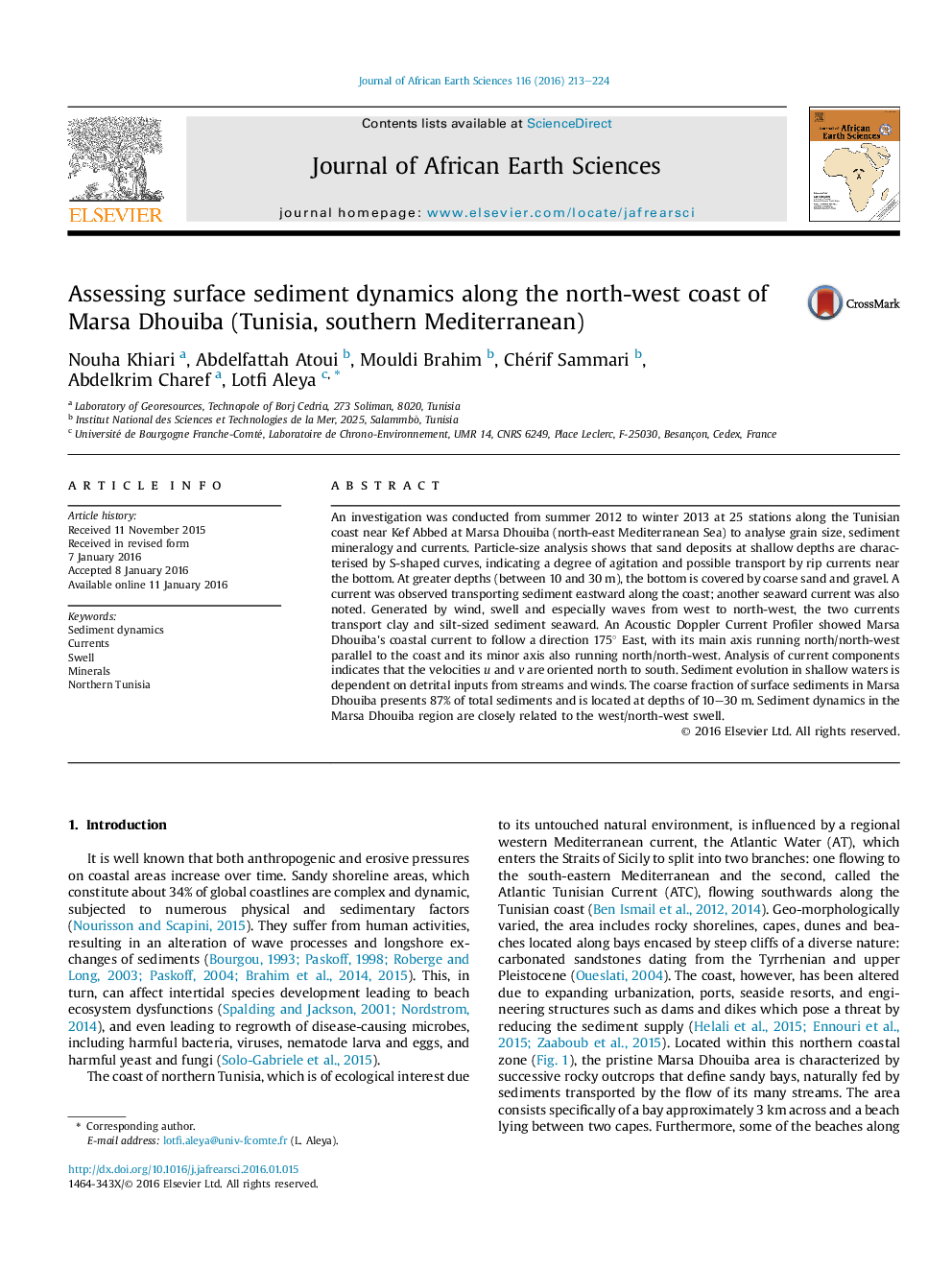| Article ID | Journal | Published Year | Pages | File Type |
|---|---|---|---|---|
| 4728303 | Journal of African Earth Sciences | 2016 | 12 Pages |
•Sediment dynamics depend on current activity.•Distribution of sediment grain size is closely related to the swell and wind.•Minerals in sediments are related to rocky substrate.•Nuclear plant and other industrial installations are not advisable.•The Marsa Dhouiba coast should remain a virgin area.
An investigation was conducted from summer 2012 to winter 2013 at 25 stations along the Tunisian coast near Kef Abbed at Marsa Dhouiba (north-east Mediterranean Sea) to analyse grain size, sediment mineralogy and currents. Particle-size analysis shows that sand deposits at shallow depths are characterised by S-shaped curves, indicating a degree of agitation and possible transport by rip currents near the bottom. At greater depths (between 10 and 30 m), the bottom is covered by coarse sand and gravel. A current was observed transporting sediment eastward along the coast; another seaward current was also noted. Generated by wind, swell and especially waves from west to north-west, the two currents transport clay and silt-sized sediment seaward. An Acoustic Doppler Current Profiler showed Marsa Dhouiba's coastal current to follow a direction 175° East, with its main axis running north/north-west parallel to the coast and its minor axis also running north/north-west. Analysis of current components indicates that the velocities u and v are oriented north to south. Sediment evolution in shallow waters is dependent on detrital inputs from streams and winds. The coarse fraction of surface sediments in Marsa Dhouiba presents 87% of total sediments and is located at depths of 10–30 m. Sediment dynamics in the Marsa Dhouiba region are closely related to the west/north-west swell.
